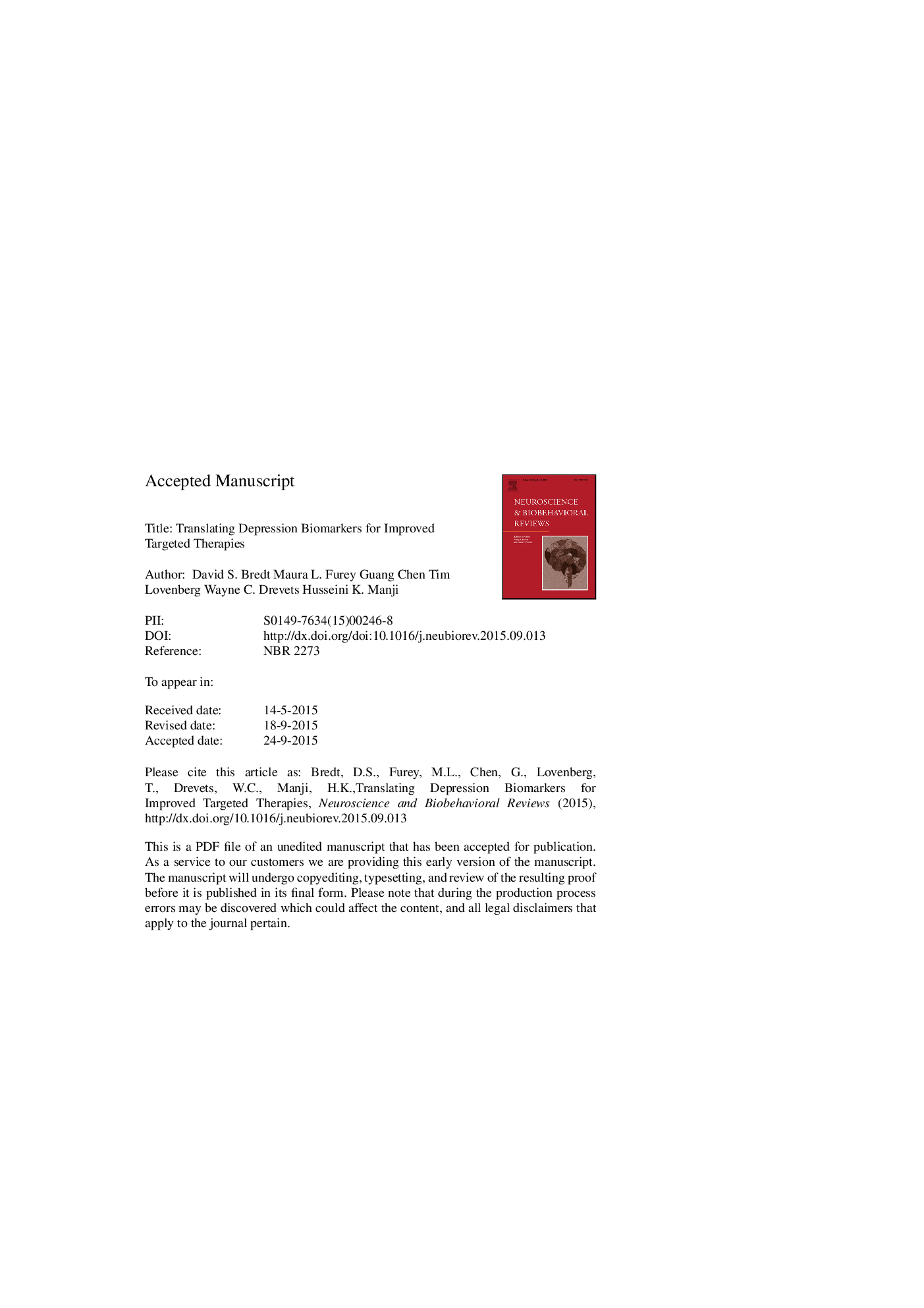| Article ID | Journal | Published Year | Pages | File Type |
|---|---|---|---|---|
| 7303150 | Neuroscience & Biobehavioral Reviews | 2015 | 42 Pages |
Abstract
Mood disorders are among the most common medical conditions and cause amongst the greatest disease burden. Currently approved antidepressants target monoamine pathways; these medicines take many weeks to relieve symptoms, and most patients do not have sustained responses. This review will highlight recent advances in translational science identifying dysfunctional biochemical processes and neuronal circuits associated with mood disorders. We will also summarize strategies for targeting these pathways and for enhancing synaptic plasticity to develop most effective and rapidly acting antidepressant therapies.
Related Topics
Life Sciences
Neuroscience
Behavioral Neuroscience
Authors
David S. Bredt, Maura L. Furey, Guang Chen, Tim Lovenberg, Wayne C. Drevets, Husseini K. Manji,
